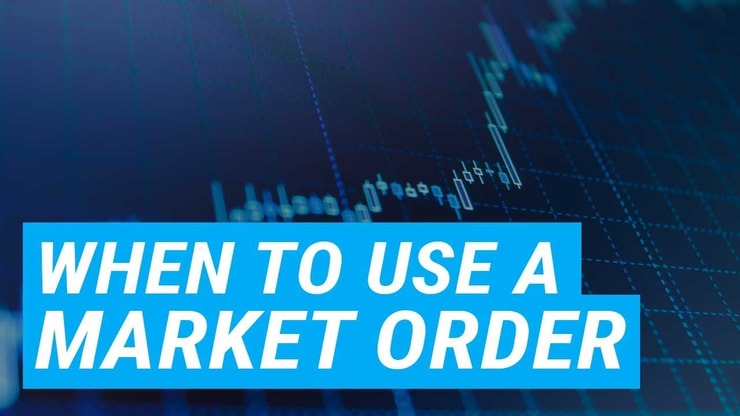Using a stop-loss in options trading is one way that traders protect themselves.
Normally, I’m not a fan of stop-loss orders — it takes control away from me.
It’s one way that lazy traders try to “set it and forget it.” It’s a good way to get stopped out of a trade in the volatile stocks that I like to trade.
Setting a stop-loss on an options trade can be a bit different from day trading the penny stocks that I concentrate on. For one thing, you’re usually dealing with longer time frames. An options trade can expire in weeks or months.
I want you to understand the pros and cons of any strategy. After you do, you need to choose the best strategy for YOU.
Read on for a deep dive into stop-loss orders and learn how you can use them!
Table of Contents
What Is a Stop Loss Order?

2025 Millionaire Media, LLCA stop-loss order is an order to trade an asset once it reaches a certain price. It’s common in stock and options trading as part of a trader’s exit strategy. You generally use this order type to limit losses or lock profits in.
If you’re trying to limit a loss, you’d set your stop-loss below the current price. This is more common in stock trading than options trading, as you can just allow your losing options trade to expire. However, a stop-loss can help you trade the contract and recoup some of your premium.
If you’re trying to lock in a profit on an options trade, it gets a bit more complicated. You might set your stop loss above the strike price but below the current price, letting your trade run but protecting it from falling back into non-executable territory. Or you could set it above the strike price and above the current price, setting a trade in motion at the point you specify.
Another variant is called a “stop-limit order”. With stop-limit orders, you set a stop that the trade becomes active at, and a limit that it will execute at. Stop-limit orders help you regulate the buy or sell price better than stop-loss orders.
Like I mentioned above, the danger of these order types is that they take your hand off the wheel. Even if you want to manually enter in an order after a stop order is placed, you’ll first have to cancel the previous order. This can cost precious seconds that you may not have to spare.
Are you new to trading options? Check my guide on learning options trading. You should also read more about the risks of option trading before jumping in.
How to Use Stop Loss in Option Trading

2025 Millionaire Media, LLCA stop-loss in options trading is like stop-loss in stock trading. You set the order at a certain trigger price.
When the asset price crosses the stop, your online trading platform will attempt to trade your options contracts. That is, as long as there’s a buyer.
Your stop-loss might not trigger if the market is closed. But it’ll be queued for when the market opens on the next trading day, unless you have extended hours trading enabled.
You need to learn the trading lingo before getting into options trading. Read my deep dives about open interest, option spreads, and option deltas.
Advantages of a Stop Loss Order
Why do people use stop-loss orders? Here are some advantages:
Gives You Room to Breathe
Trading can be intense at times. You might be looking at charts for hours each day. Watching Level 2 can feel like the world’s longest, most heated ping pong battle. Sometimes you just want to take a breather without exiting your current positions.
That’s where stop-loss orders can come in. You set a stop and can step away, knowing that you’re protected.
I don’t endorse this, but I can see the appeal. Trading should fit your lifestyle, that’s one of the big attractions.
Taking the laptop lifestyle to new depths…there was actually was wifi here! pic.twitter.com/xGIjodHxDo
— Timothy Sykes (@timothysykes) June 24, 2018
Prevents Emotional Trading
I try not to get emotionally attached to my trades. But even after 20-plus years, I can still hold onto a position too long.
If that’s me, imagine what happens when you’re a newbie!
I can’t repeat this enough: ALWAYS REMEMBER TO LOCK IN YOUR PROFITS INTO STRENGTH….NEVER LISTEN TO SHADY AF PROMOTERS AND JUST HOLD AND HOPE ALLLLLLL THE WAY DOWN LIKE FAR TOO MANY PEOPLE DO!
— Timothy Sykes (@timothysykes) January 20, 2022
When a trade doesn’t go according to plan, it’s human nature to abandon your trading plan. You start to believe prices will bounce back. But a lot of the time, they don’t.
Stop-loss orders can give you the safety net needed if you’re still working on your discipline. They force you to follow your plan. Taking the choice to exit out of your impulsive hands might save you from big losses.
Disadvantages of a Stop Loss Order
I find there are more disadvantages to stop-loss orders than advantages. Here are three of my biggest gripes:
More Breaking News
- Stellantis Reflects on Recall Impact
- HL Stock Fluctuations: Time to Gather Insights?
- Pharma Boom: Verona Pharma’s Latest Surge
Vulnerable to Short-Term Price Fluctuations
Stop-loss orders kick in when the current price hits the trigger price. That’s a good thing, in theory. But it can be messier in practice, especially with short-term price dips.
The stop-loss order will trigger if the price dips to your trigger price before bouncing back. This is called getting “stopped out.”
You Lose Control Over Trades
Your stop-loss order becomes a market order once it reaches the stop price. If you need reminding…
Stop-limits are much better. But even they have risk…
Sometimes a falling stock falls past your stop, becomes executable, but blows by your limit too quickly! You trusted your stop, and got distracted…
Now you’ve dug yourself a hole you didn’t have to. Trading is a battlefield, and you were the fighter jet pilot on autopilot.
You’re at the Mercy of Market Makers
Market makers can see your stop-loss orders, and they can’t resist. The mission of market makers is to create liquidity…
And your stop-loss may be an unwilling participant in the push for volume.
This is one of the most important reasons I don’t use stop-loss orders. Part of being a safe trader is not leaving the keys in the ignition.
Key Takeaways

2025 Millionaire Media, LLCI don’t use stop loss-orders because I’m giving up control. But they might fit your strategy — and that’s what matters.
Whether you use stop-loss orders or not, the rules of responsible trading still apply:
- Don’t copy other people’s options trades. Nobody can make individualized recommendations for you because everybody trades differently.
- Learn from experienced options traders. Make sure the people you learn from are reliable sources.
- Make your own stock watchlists. Do your research and make informed trades.
- Build and follow a trading plan. This is the cure for emotion-driven trading, and the only scientific way to approach your trading goals.
- Record every trade for future review. Improve your strengths and patch up your weaknesses.
Options trading is one of the hardest things you’ll ever learn. You can’t expect to get good within days.
What’s important is improving your skills with every trade. You can learn from good and bad trades. So, don’t be afraid to make mistakes.
How do you master options trading strategies? Learn from experienced traders like Ben Sturgill. Ben’s smart-money webinars are the product of more than 2 decades of experience in the market and a unique technology, and they’re well worth checking out.
Check out the webinar here to see why Ben’s smart-money scanner has been going haywire lately!
Do you use stop-loss orders? Let me know how they work with your trading strategy in the comments!



Leave a reply